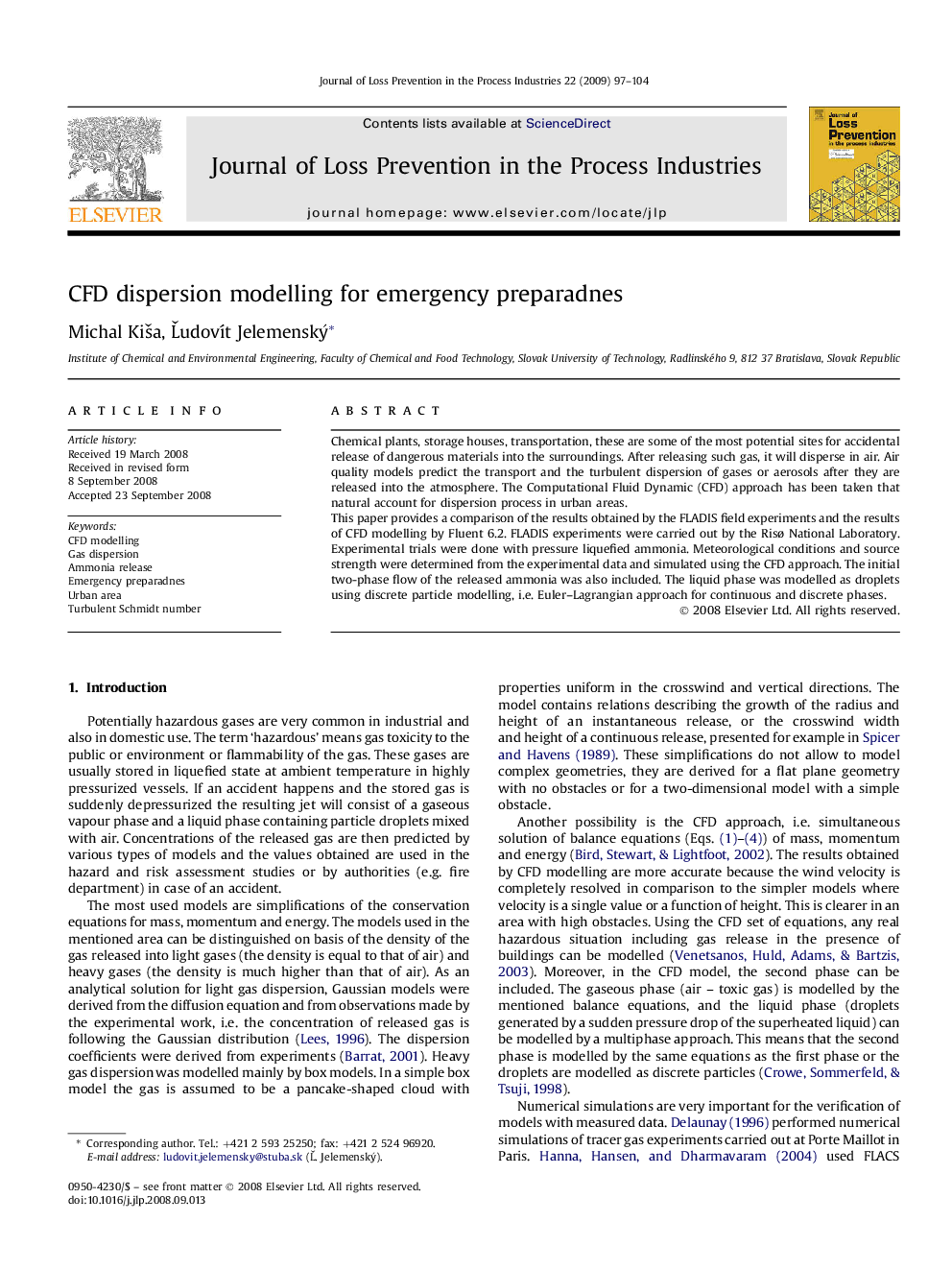| Article ID | Journal | Published Year | Pages | File Type |
|---|---|---|---|---|
| 587212 | Journal of Loss Prevention in the Process Industries | 2009 | 8 Pages |
Chemical plants, storage houses, transportation, these are some of the most potential sites for accidental release of dangerous materials into the surroundings. After releasing such gas, it will disperse in air. Air quality models predict the transport and the turbulent dispersion of gases or aerosols after they are released into the atmosphere. The Computational Fluid Dynamic (CFD) approach has been taken that natural account for dispersion process in urban areas.This paper provides a comparison of the results obtained by the FLADIS field experiments and the results of CFD modelling by Fluent 6.2. FLADIS experiments were carried out by the Risø National Laboratory. Experimental trials were done with pressure liquefied ammonia. Meteorological conditions and source strength were determined from the experimental data and simulated using the CFD approach. The initial two-phase flow of the released ammonia was also included. The liquid phase was modelled as droplets using discrete particle modelling, i.e. Euler–Lagrangian approach for continuous and discrete phases.
